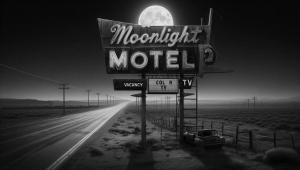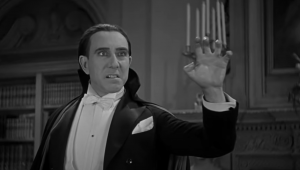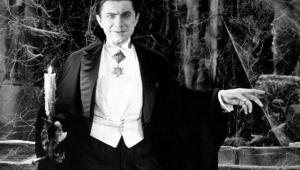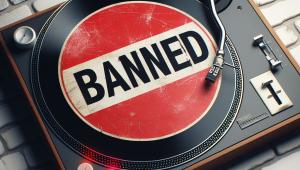Shop ‘til You Drop, La, La, La

If I wanted to brainwash someone, or otherwise make them do my evil bidding, I’d surround my victim with loudspeakers, then share my playlist. When Panamanian dictator Manuel Noriega sought refuge in the Apostolic Nuncio, the U.S. Army continuously played “I Fought the Law” by The Clash with the volume cranked up to 11. Noriega lasted 10 days before he surrendered—an extremely impressive feat. But if they had played holiday music, he would have crumbled within hours.
Retailers know all the tricks. In grocery stores, staples like bread and milk are often placed at opposite sides of the store so that you have to walk through the entire store (buying nonessentials) to get them. Similarly, psychological warfare is basic to retailing. Knowing the psychological power of music, retailers routinely use tunes to induce us to buy stuff. Experts who specialize in this sort of thing tell us that listening to music we like releases dopamine, and that promotes a feeling of pleasure and gift-buying generosity. Alternatively, loud and irritable music makes us want to escape (just ask Mr. Noriega)—quickly snatching up gifts to get it over with.
Slow music slows us down and encourages us to linger in the store, giving us more time to spend. Up-tempo music energizes us and encourages us to buy; loud music can overstimulate us and trigger rapid, impulse buying. Everyone has a music vulnerability, often with a unique quirk; for example, wine drinkers don’t buy more wine when they hear classical music, but they buy more expensive wine.
Today’s music is a far cry from yesterday’s elevator Muzak. Creating retail playlists is big business, and retailers use music to drive home their brand and the lifestyle they wish to portray. In particular, while music has always been vital to TV and radio commercials, in-store music is now equally important. Music as an environmental factor differentiates stores or zones within one store, it is relatively cheap, it is easily changed, and can be reliably targeted to different buyers.
For example, Macy’s plays a loud DJed soundtrack in its youth-oriented departments, and softer, more mellow music in the housewares departments. At Thomas Pink, a British men’s store, hip British music is at the top of its charts. Trendy Abercrombie & Fitch offer its in-house playlists as an app so you can take them with you after you leave the store. Savvy retailers swiftly rotate music to avoid shopper (and employee) fatigue, and even choose different playlists for different times of day. Of course, at most stores, Christmas classics ramp up steadily throughout the holiday season.
So whether you’re trying to oust a military strongman, or sell some blue jeans, you can rely on music. And during the holiday season, all that sneaky sonic inducement is in full force. When that credit-card statement arrives in January, don’t feel bad—it wasn’t your fault. The store music made you do it. Unless, of course, you did your shopping online.
- Log in or register to post comments






























































